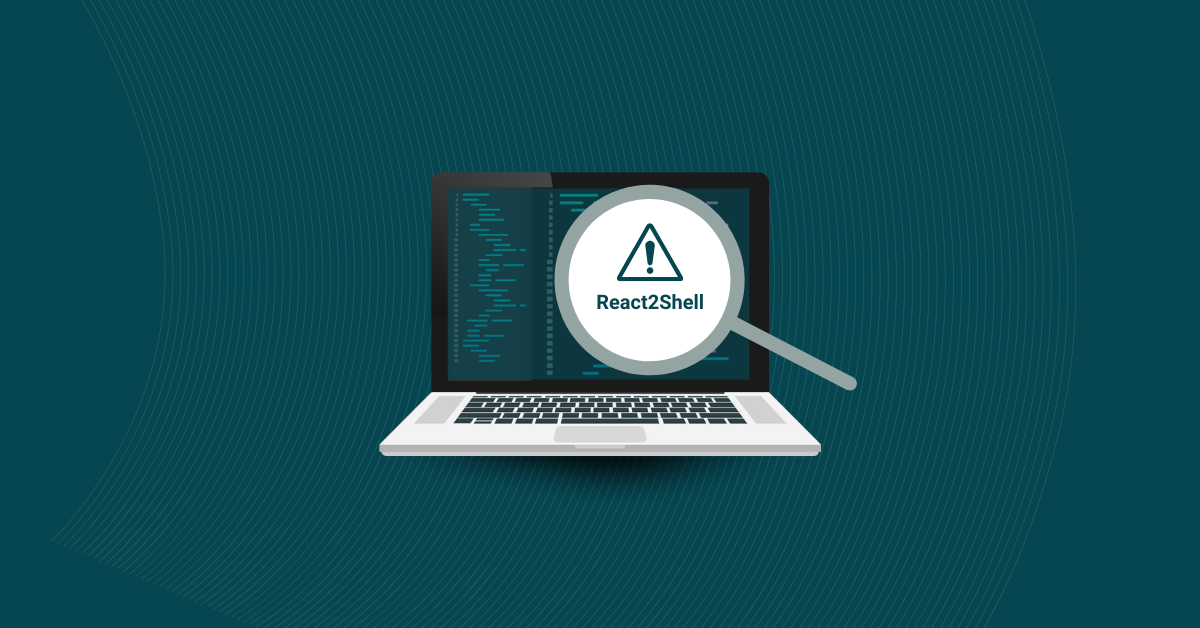

Cybersecurity metrics have become business-critical due to their direct impact on organizational security and profitability. According to IBM’s 2024 Cost of a Data Breach Report, organizations that’ve embraced security AI and automation save an average of $1.9 million more than those without the technology. These businesses detect and contain incidents significantly faster than companies that haven’t embraced top-shelf data security measures.
Common cybersecurity metrics help you monitor your security program’s overall effectiveness. These markers also help security teams identify vulnerabilities and track progress. Regardless of their background, it’s important that stakeholders understand their cybersecurity team’s key performance indicators (KPIs).
Tracking the right KPIs can help your team stay safe in today’s ever-evolving threat landscape.
Cybersecurity metrics let you precisely measure the effectiveness of your organization’s overall security profile. Tracking these metrics can help you detect small problems before they become serious. They can also guide you to existing and potential vulnerabilities.
KPIs operate at a slightly higher level. You can think of KPIs as long-term goals you might work toward over time. In other words, KPIs are your strategic goals, and cybersecurity metrics represent some of the data you’ll use to determine if you’re on track to meet those goals.
For example, developers working in the financial services space need to monitor three crucial areas to maintain their organization’s security posture.
By tracking these KPIs, DevSecOp teams can identify vulnerabilities before they become major problems. This is important in the financial services industry, where an average data breach costs more than $6 million. Plus, developers can integrate these measures directly into continuous integration (CI) and continuous deployment (CD) pipelines. This creates feedback loops that can help secure production from vulnerable code.
Cybersecurity metrics help firms manage risk effectively while allowing for strategic, long-term planning. Not only do cybersecurity metrics help keep firms safe, but they also lay the groundwork for informed decision-making when it comes to resource allocation. In particular, detailed cybersecurity metrics can help executives and other key stakeholders justify costs relating to security investments. This is especially important given the rising costs of a corporate data breach. Between 2023 and 2024, data breaches became 10% more expensive, topping out at a record-setting $4.9 million. Depending on your industry, you may also need to track certain cybersecurity measures to maintain regulatory compliance.
Security metrics fall into three main categories, each of which serves an important purpose in any organization’s overall cybersecurity strategy.
Operational metrics help you monitor your firm’s digital security apparatus. Your security team can use these metrics to refine their ability to respond to security incidents while maintaining system functionality.
Compliance metrics help you comply with the law and industry standards. Highly regulated industries, such as financial services, must monitor these metrics closely to avoid stiff penalties.
Risk-based metrics help you measure your organization’s exposure to cyber threats and quantify the potential impact of these risks on your firm’s business. Chief information security officers (CISOs) and board members can use these metrics to make strategic decisions about allocating resources within the company.
Understanding the different types of cybersecurity metrics can help you create a comprehensive framework aligned with your business’s high-level objectives.
Operational metrics help you enhance organizational efficiency, especially when it comes to your business’s security operations center (SOC) and incident response capabilities. These metrics help you find, address, and contain security incidents.
The mean time to detect (MTTD) measures the average time between a security incident and when your team detects it. Advances in AI security tools have reduced the average time to identify and contain a breach to just 241 days. Keep in mind that this still represents approximately eight months of potential damage.
Narrowing your MTTD limits the damage attackers can wreak on your business.
The mean time to respond (MTTR) measures how fast your team responds to security incidents.
The mean time to contain (MTTC) measures the time it takes to stop a security incident from creating further damage, also known as containing. This metric can help you stop lateral movement in malware and intrusion attempts.
The number of security incidents tracks the total volume of all security incidents over a set timeframe. This metric can help organizations tease out seasonal patterns and identify long-term trends.
This metric looks at how many vulnerabilities remain unfixed beyond what was set down by the service level agreement (SLA). Many of these vulnerabilities may indicate process failures in an organization’s patch management system.
This examines the number of unauthorized access attempts, which can help organizations identify potential insider threats.
The number of security reviews measures how often security tests, code reviews, and audit activities occur. Regular reviews are important for maintaining strong security controls.
A patch is a software update addressing known security issues and vulnerabilities. The patching rate monitors the percentage of your systems with current security patches. Tracking your organization’s patch rate helps lower your risk exposure to known vulnerabilities.
This is critical for your organization’s security because stolen or compromised credentials take 292 days on average to identify and contain.
The false positive rate can help you track the percentage of security alerts that don’t reflect actual threats. This is especially important since research shows roughly half of all endpoint detection and response (EDR) alerts are false positives. This entails significant investigation time for your team. Keeping your organization’s false positive rate down prevents wasted resources and delayed responses to actual problems.
Compliance metrics help you adhere to the regulatory frameworks governing your industry. Monitoring these metrics can help your organization avoid costly penalties while maintaining the trust of your client base.
Policy compliance tracks how well your security policies are followed across the breadth of your company’s systems and users.
This measures how well your vulnerability management program works from discovery to the assessment stage to remediation efforts.
This metric tracks compliance with incident response rules and reporting requirements.
Security awareness training measures the number of employees who have completed security awareness training programs. This metric also looks at the overall effectiveness of these programs against social engineering threats. A recent study shows roughly one-third of untrained individuals will fail a phishing test. However, this drops to just one in 20 after a year of training.
Third-party risk management tracks and analyzes the security posture of individuals and organizations in your supply chain.
Data protection and privacy metrics measure implementation levels of data protection rules and end-user privacy safeguards. A recent study by Microsoft revealed that data protection enhancement mechanisms like phishing-resistant, passwordless authentication methods can sharply diminish the opportunities for malevolent actors to infiltrate your networks.
Remember that failing to take adequate steps to protect your end users’ data could lead to harsh repercussions. For example, healthcare companies can face HIPAA fines of up to $50,000 per occurrence ($1.5 million per year) for failing to safeguard their data adequately.
This metric tracks the implementation rate and overall effectiveness of access control measures, which include privileged access management and endpoint security controls.
This metric tracks problems uncovered by audits, how quickly those problems are fixed, and overall compliance with various regulatory frameworks.
Risk-based metrics help organizations put a dollar figure on potential business costs by using risk assessment outcomes.
The phishing click rate helps companies measure the percentage of employees who respond to fake attempts to steal a user’s information, called a phishing email. This metric helps organizations understand the overall security awareness of their employees.
The patch compliance rate measures the percentage of an organization’s systems with current security patches within a set timeframe. This metric correlates with risk exposure from known vulnerabilities.
Vulnerability recurrence tracks how often the same vulnerabilities come back after remediation. This helps firms spot recurring trouble spots.
This metric tracks how employees participate in security awareness training programs. It can also provide insights into how well employees can identify and respond to potential security issues, such as phishing scams.
This measures the number of detected attempts to steal sensitive data from your organization, which can help you gauge the likelihood of insider threat risks. Keep in mind that insider risk management continues to be a top concern for firms due to its steadily increasing cost. The annual cost of data exfiltration attempts rose from $16.2 million in 2023 to $17.4 million in 2024 per organization.
This metric tracks violations of your organization’s security policies. It can help you identify training opportunities and areas that would benefit from greater enforcement of current rules. For example, a security policy violation could include unauthorized access attempts or improper data handling. Other common security policy violations include failing to follow password policies and bypassing required security protocols if you need remote access.
This helps you quantify in dollar terms the cost of an average security incident, including downtime, remediation costs, and regulatory penalties. Keeping a close eye on your average incident cost can help you make the case for security investments. It also makes it easier to measure return on investment (ROI).
With cybersecurity KPIs, you can gain strategic insights into your firm’s security profile. It’s important to track metrics across various categories, including preventive and remedial areas.
This KPI tracks how well your organization can handle cyber threats and other digital security incidents and includes factors like incident response plan maturity, team training levels, and exercise frequency.
Tracking the number of unidentified devices on your organization’s internal networks can help you identify endpoint security gaps and potential intrusion attempts. This KPI is especially important for financial institutions due to fraud prevention and regulatory requirements.
This KPI tracks the total number and severity of security incidents across time. Keeping track of the number of security incidents your system encounters can help you measure the effectiveness of your cybersecurity apparatus.
First-party security ratings track your organization’s security posture by using an external rating service. A strong first-party security rating can demonstrate system integrity to customers and business partners.
This measures the speed and consistency of patch management across your organization’s systems, which is called your system environment. For example, you want a steady patch cadence to ensure that each system your organization depends on receives patches for maximal security. In other words, measuring your patch cadence is important to limit your vulnerability exposure window.
Access management looks at how well identity and access management controls work, including privileged account management and access review processes.
This measures how fast third-party providers can apply security patches to systems and services they manage for your business.
The mean time for vendor incident response measures how quickly external providers can respond to security incidents that affect your organization. Tracking this KPI can help you mitigate risks to your supply chain.
It’s important to know the challenges you’ll face when setting up your cybersecurity metric and KPI tracking. Understanding common problems can help you limit their impact by taking preventive measures.
The lack of industry standards for cybersecurity metrics makes it difficult to determine where your organization stands relative to its peers. What one business considers a critical vulnerability might be classified as only a moderate security risk elsewhere.
For example, manufacturing organizations may prioritize operational technology security differently from financial services firms. Financial services firms typically focus more heavily on data protection and regulatory compliance.
Automation boosts productivity by enabling smaller security teams to do more. According to a recent study, adopting AI cybersecurity tools saves firms an average of nearly $2 million annually.
But it’s important to be aware of your limitations with automated tools. For example, many automated tools misidentify non-issues as problems, a phenomenon called false positives. This can lead to wasted time and effort. Research shows that 40% of businesses get over 5,000 false positives every day, leading to wasted time and effort by your security team.
Data and system siloing may result in an incomplete view of your cybersecurity metrics, making correlation analysis needlessly difficult.
Enterprise development teams often find that their SAST tools, SCA platforms, and incident response systems use different categorization schemes. A single categorization scheme would allow for a unified dashboard, enhancing the efficiency of your cybersecurity team.
Non-technical stakeholders must understand security metrics in their proper context. A failure to do so can lead to poor decisions and misaligned priorities. Data suggests that high-performing security teams interact with non-technical stakeholders more than their lower-performing counterparts.
To combat this challenge, CISOs need to be careful when presenting technical metrics. Framing metrics and KPIs in terms of their impact on the business as a whole can help avoid this problem.
The fast-changing threat landscape means you must periodically update your metrics to remain relevant. For example, phishing click rates tripled in 2024 despite user training. To prevent your team from being overwhelmed by this changing threat landscape, you must continue to refine your approach.
To successfully implement cybersecurity metrics, you need to engage in strategic planning and ongoing refinement to drive meaningful improvements.
Use these best practices to align your organization with cybersecurity metric best practices.
Your cybersecurity metrics should directly relate to your organization’s business objectives and risk management strategy. That means it’s vital that you focus your data collection efforts only on what’s most relevant to your firm. For example, healthcare organizations should prioritize HIPAA compliance given the high cost of data breaches in this sector. A data breach in the healthcare sector costs an average of nearly $10 million.
To avoid wasting time and money, avoid overly complex metrics that require extensive analysis. When it comes to designing cybersecurity KPIs, simplicity is a virtue. Focus on information that indicates when you need to take action and what steps you should take.
In addition to simplifying your metrics, organizations would also benefit from a simple dashboard with visualizations that use color coding and trend lines. This will let your team know your organization’s overall security posture at a glance.
Remember, when it comes to security, you can often simplify more than one thing. Simplifying metrics and your dashboard can both be helpful to your team.
Establishing a consistent feedback system will help ensure your organization’s cybersecurity metrics remain useful. You can create feedback loops between business stakeholders and security and development teams to promote constant scrutiny and feedback.
Your DevOps teams should also conduct weekly metric reviews. This can help them identify trends and adjust security controls using real-time data.
You can help your stakeholders understand the actual value of your organization’s security investments by connecting cybersecurity metrics to potential business risk and financial impacts. One way to do this is to calculate the cost of downtime from security incidents and compare it to the investment required for preventive measures.
It’s a good idea to share cybersecurity metrics broadly across your organization. This will help promote security awareness across all levels of the business and enable collaborative improvement efforts. Plus, transparency can help build trust between teams while encouraging proactive security behaviors.
One effective method to consider adopting is creating monthly reports tracking security wins and areas for improvement. Sharing this document with the company can shift your organization’s mindset by making cybersecurity a companywide priority rather than just the narrow responsibility of your security team.
Tracking the right cybersecurity metrics and KPIs is essential to keeping your organization secure. These aren’t just numbers on a dashboard; they’re strategic tools that drive smarter decisions and stronger security outcomes.
The most effective metrics align with your threat landscape, business objectives, and compliance goals. Whether you’re aiming to reduce response times, improve patching, or raise security awareness, start by assembling a cross-functional team to identify your top priorities.
Cybersecurity metrics only matter if they drive action. Focus on the KPIs that help your team make informed decisions, reduce risk, and strengthen defenses in real time.
That’s where Kiuwan’s SAST and SCA tools make an impact. Our solutions help you identify third-party vulnerabilities, stay compliant, and manage licensing risks—all within your development workflow. Request a free demo to see how Kiuwan helps you turn insights into secure outcomes.
Cybersecurity metrics are data points that measure the effectiveness of an organization’s security posture. They help teams track vulnerabilities, detect threats early, and assess ongoing risk exposure.
A cybersecurity KPI (Key Performance Indicator) is a measurable target that reflects progress toward a strategic security goal. KPIs help teams determine whether their efforts are meeting business and security objectives.
Cybersecurity metrics provide visibility into security performance, enabling teams to manage risk, justify investment, and plan strategically. They help prioritize efforts and ensure resources are directed where they’re needed most.
Cybersecurity metrics typically fall into three categories:
Common cybersecurity KPIs include:
Measuring cybersecurity metrics is challenging due to a lack of standardization, making it hard to compare data across tools or teams. Over-reliance on automated and AI-driven tools can also lead to incomplete or misleading results. Fragmented systems and siloed data further complicate measurement, while evolving threats require constant updates to what’s being tracked. Finally, metrics are often misinterpreted by stakeholders without a technical context, reducing their practical value.
Yes, Kiuwan SAST scans your application’s source code to detect vulnerabilities, supporting operational metrics by identifying insecure coding practices early in the development cycle. Meanwhile, Kiuwan SCA analyzes third-party components and libraries for licensing and compliance risks, aligning with compliance-related metrics. Together, these tools integrate into your development workflow, offering continuous visibility and actionable insights.


